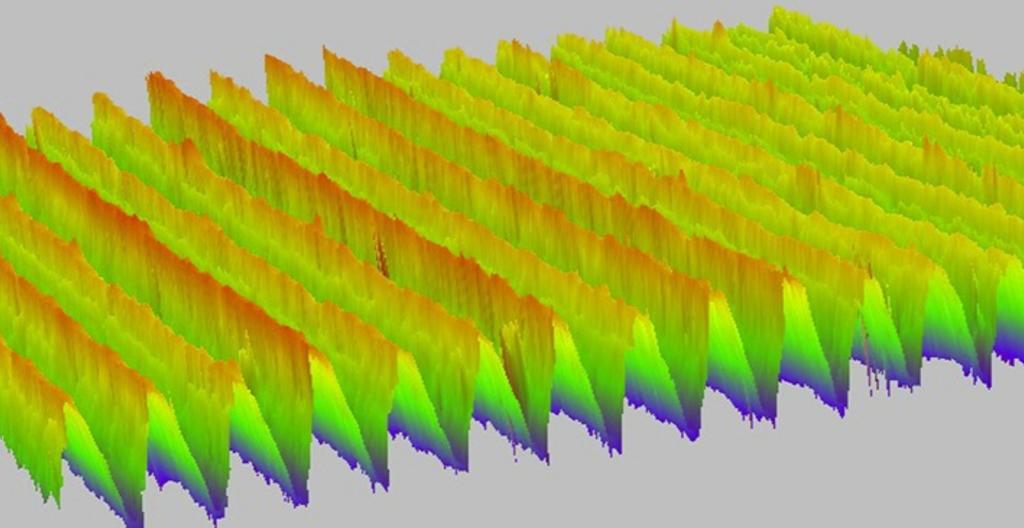
Blogs
Breaking the Sealing “Surface”
How the Right Surface Finish Is Critical in Oil & Gas Applications
By Geert Vanthienen (September 2020)
In a previous oil and gas blog post, we discussed four key factors to consider when selecting sealing solutions: application, working conditions, compliance, and fugitive emissions with proven design. Behind these four factors are other design engineering elements that go into developing the seal to precisely fit and perform optimally in a certain environment. Similar to the industry’s deeper investigation into complex downhole reserves and urgency to solve high pressure, high temperature (HPHT), cryogenic temperatures, heavy oil, and other challenges, we are also delving deeper into an engineering element that may be overlooked or underestimated, which is how the right surface finish can make or break a seal’s ability to function properly.
Polymer spring-energized seals used in critical oil and gas applications such as cryogenic trunnion mounted ball valves (TMBVs) for liquefied natural gas (LNG) are often required to address a number of important considerations that can affect performance:
-
Exposure to chemicals, with seals needing to be able to resist corrosion or attack
-
Extremely low temperatures can make elastomers and some materials brittle, causing them to crack
-
High pressures, required to prevent contamination from process fluid leaking out or other contaminants getting into the application
-
Stringent regulatory requirements for fugitive emissions, cryogenic norms, and others, including developers increasingly striving to comply at higher levels with Shell MESC SPE 77-300 class A and ISO15848-1 class AH
-
Safety of the application, plant, environment, and workers
-
Costs and time associated with replacement in hard to reach applications such as subsea or LNG, necessitating complex, time-consuming processes including decommission and perishing of the line
The presence of any of the above conditions makes selecting the right seal and materials along with the right surfaces crucial for any oil and gas customer to enable a good seal and long life.
Designing the ideal seal
Especially with critical applications in oil and gas, seal developers need to consider the surface finish of valve hardware in addition to that of the seal. Within the sealing area when two surfaces enter into contact, the straighter the line, the smoother the surface of the seal and mating surface (versus being wavy or rough), the better the sealing performance. In most cases, the ideal sealing performance is achieved when you have a smooth surface of the seal on a smooth surface of the hardware. As this is not always attainable, having a smooth seal is quite valuable and advantageous for the customer. Another benefit is that it can often compensate for rougher mating surfaces. Even with an excellent quality, smooth seal, the mating hardware also is an important aspect since an overly abrasive or less than optimal, mating hardware can lead to wear down the line.
A Leader in Life Sciences Seals & Polymer Components
As a result, developers and manufacturers need to look at all aspects of the surface of the seal, in addition to materials used and other factors. Properly defining, measuring, and controlling surface finish quality is critical to the functional reliability and service life of a seal. The following are several items to specifically review.
1. Mating surfaces roughness
One important element that should be considered is the sealing area. The surface finish of materials that come into contact with seals influences seal wear and life expectancy. Generally, smoother surface finishes correspond to lower wear, extended seal life, and improved overall seal performance. Developers and manufacturers should avoid rough surfaces with burrs or hard particles that can drag along the sealing area, damage seals, and create scratches that might impact performance.
A roughness measurement should be performed on the sealing area. We recommend specific roughness values depending on the application to ensure maximal results of its seals.
2. Mating surfaces hardness
The hardness of the mating surface should also be considered. If mating materials are too soft, the seal might damage the surface. A harder material can improve longevity and prevent damage from the seal. Hard surfaces can also lower the friction of the seal. Hardness between 40 to 60 Rockwell C is recommended for ‘normal’ applications.
Getting the right sealing solution for critical applications in oil and gas and other industries requires a number of factors, including surface finishes, materials, installation, maintenance, and more. When the seal is critical, these parts should be specifically designed for the application.
At Omniseal Solutions™, our optimum machining process for seal manufacturing ensures the sharpest tools and optimal machining parameters to provide the best finish performance. We are able to provide the smoothest seal finishes so that our customers are able to keep rougher mating surface finishes if desired. This can equate to lower costs to the customer to machine the surface finish. Our machining process also translates to other customer requirements such as large diameters and custom sizes.
From valves in subsea applications to FPSO to fugitive emissions and more, our Omniseal® spring-energized seals address stringent reliability and durability requirements of the oil and gas industry. Originally used for one of the most challenging sealing environments, cryogenic liquid propellants in rocket engines in the 1950s, our seals offer a precise fit in oil and gas applications, maintaining resilience and sealing force in aggressive media, sour gas, and extreme operating conditions. These seals offer vacuum pressure of up to 2,068 bar or 30,000 psi, the ability to withstand extreme temperatures from -253°C to +365°C (-424°F to +690°F), harsh chemicals, and compliance with the increasing need for zero leakage with Shell MESC SPE 77-300, ISO_DIS_28921-2, and others.
Do you need more details about the surface finish or other engineering sealing elements? Contact us for insights on how we can help today.
